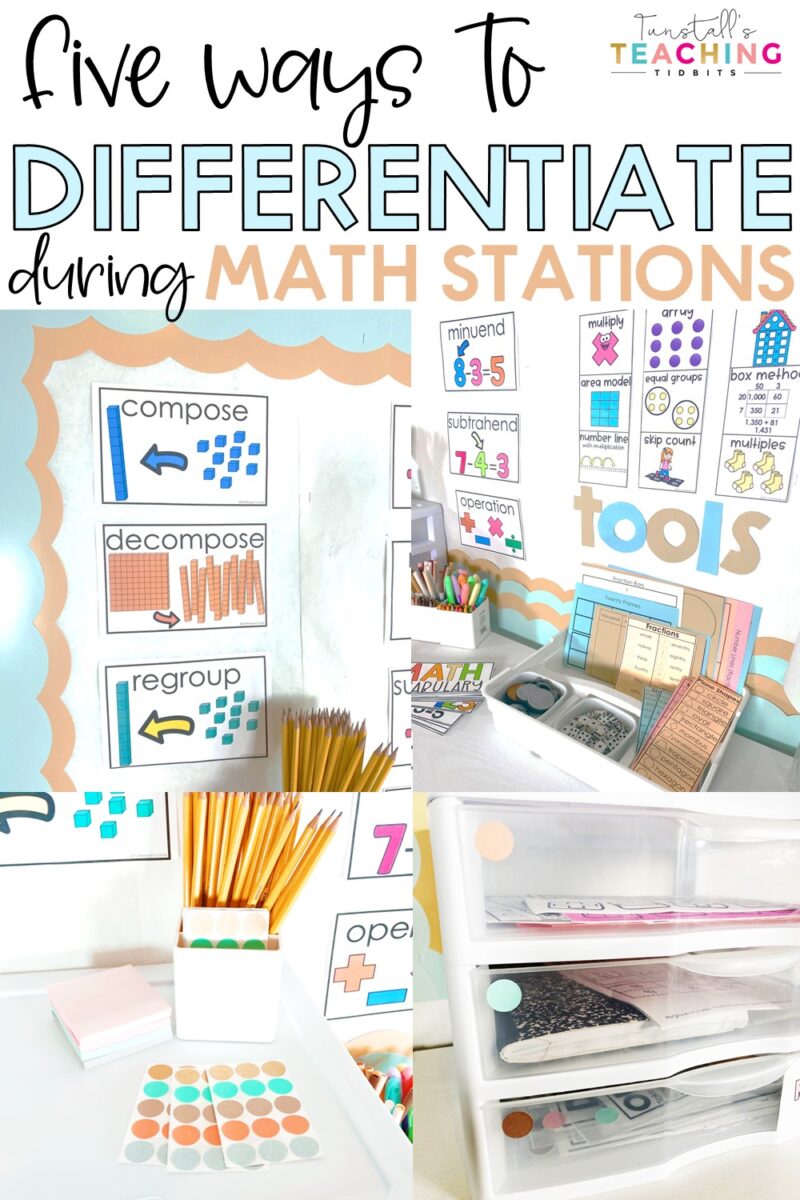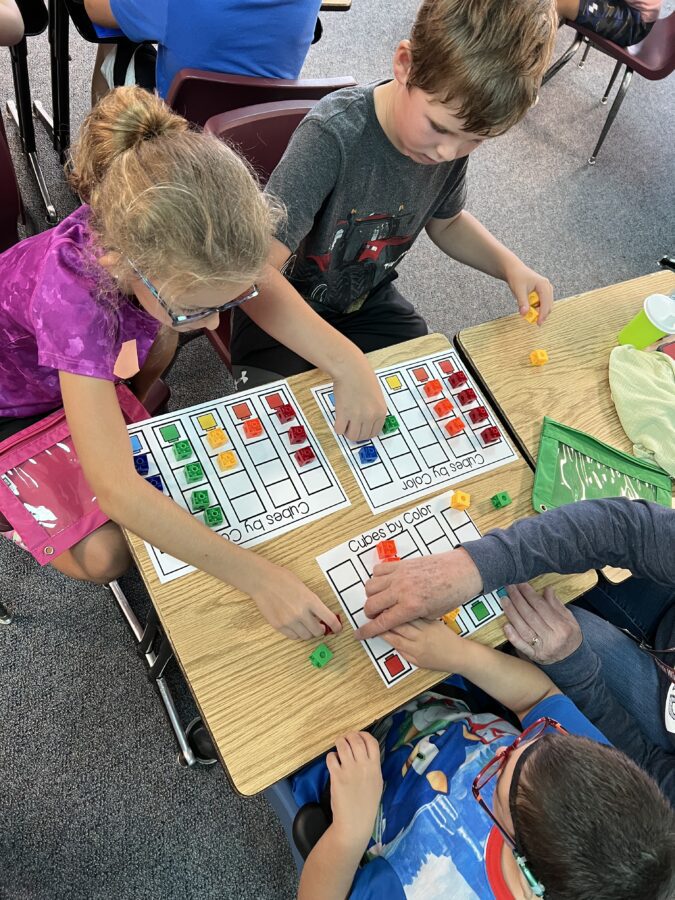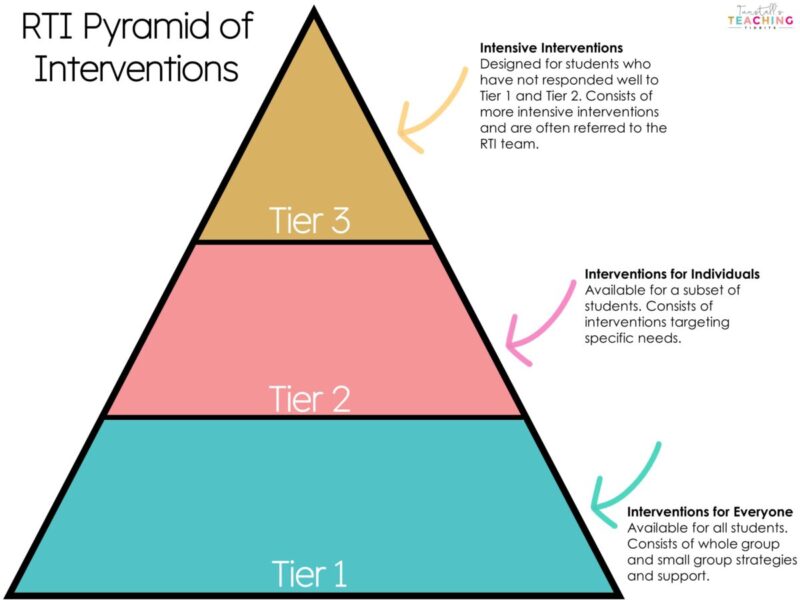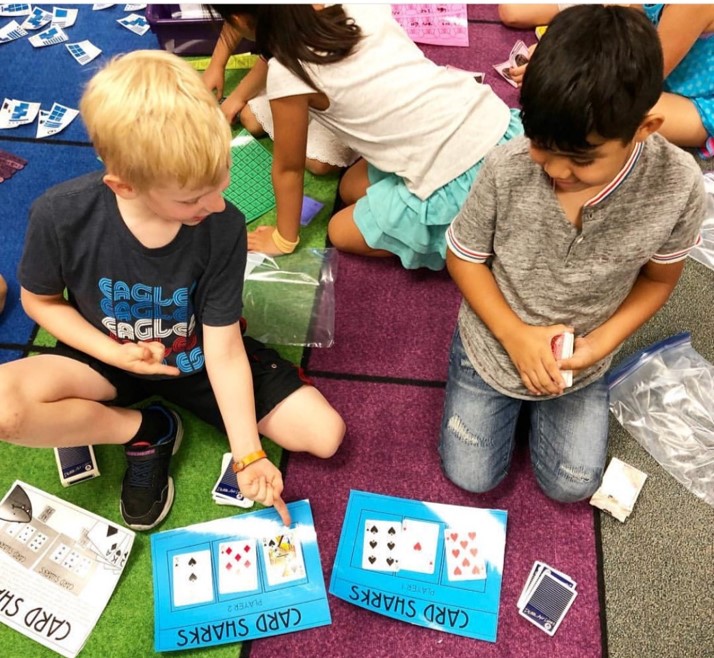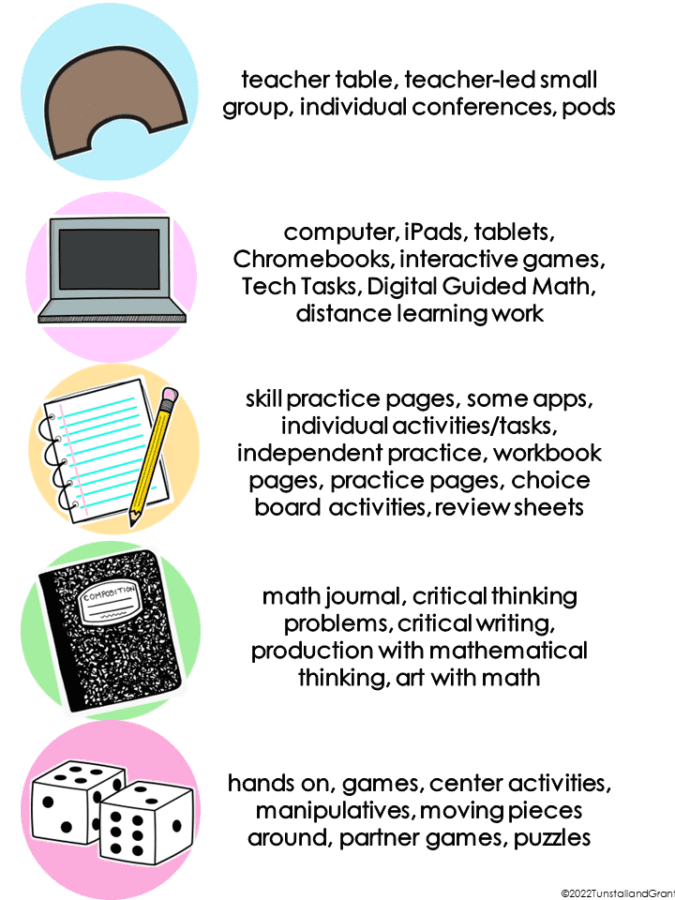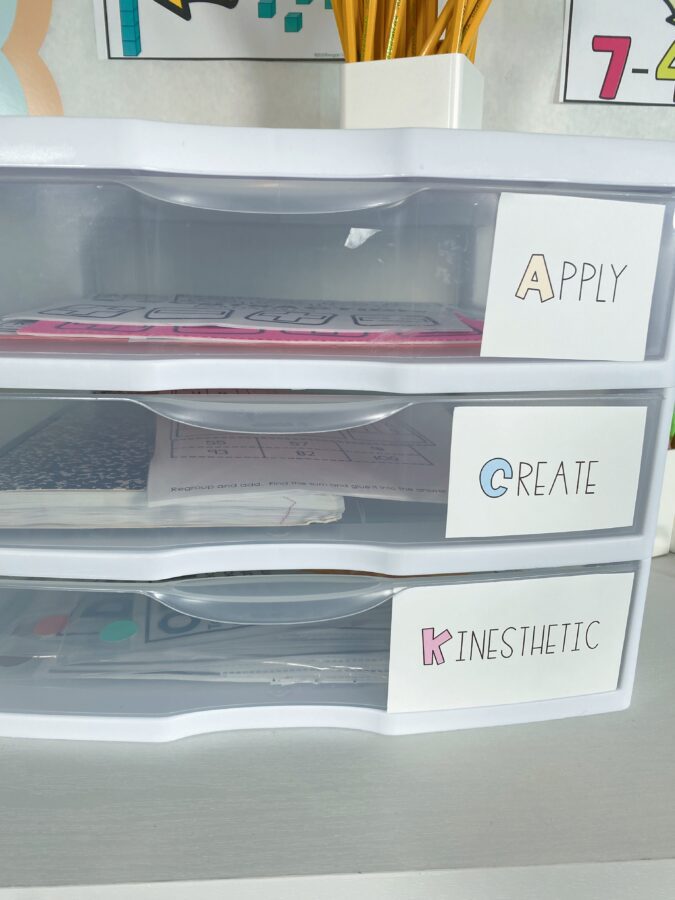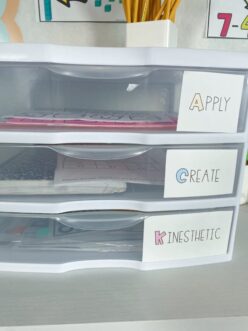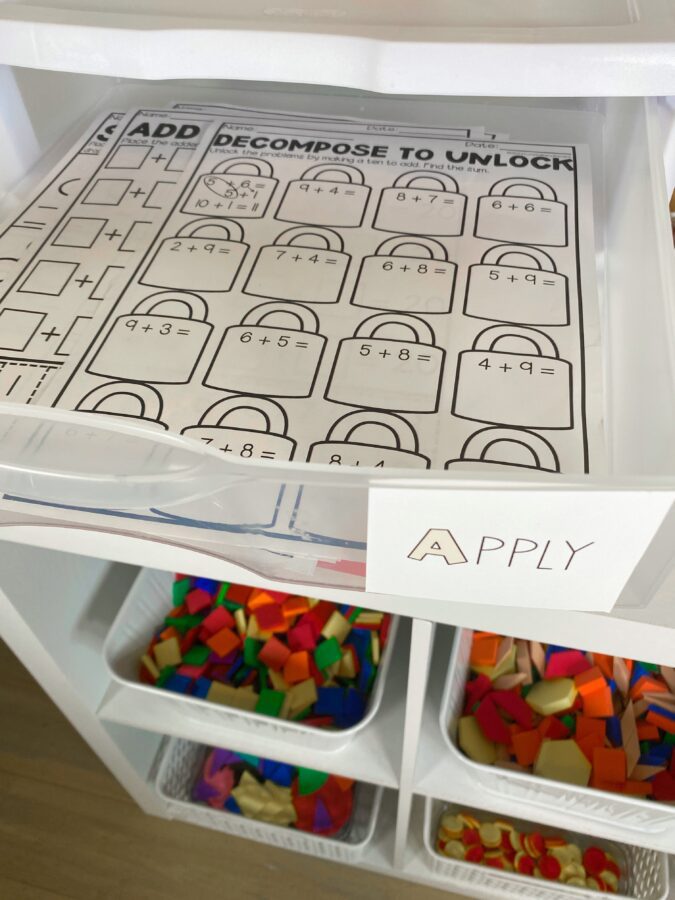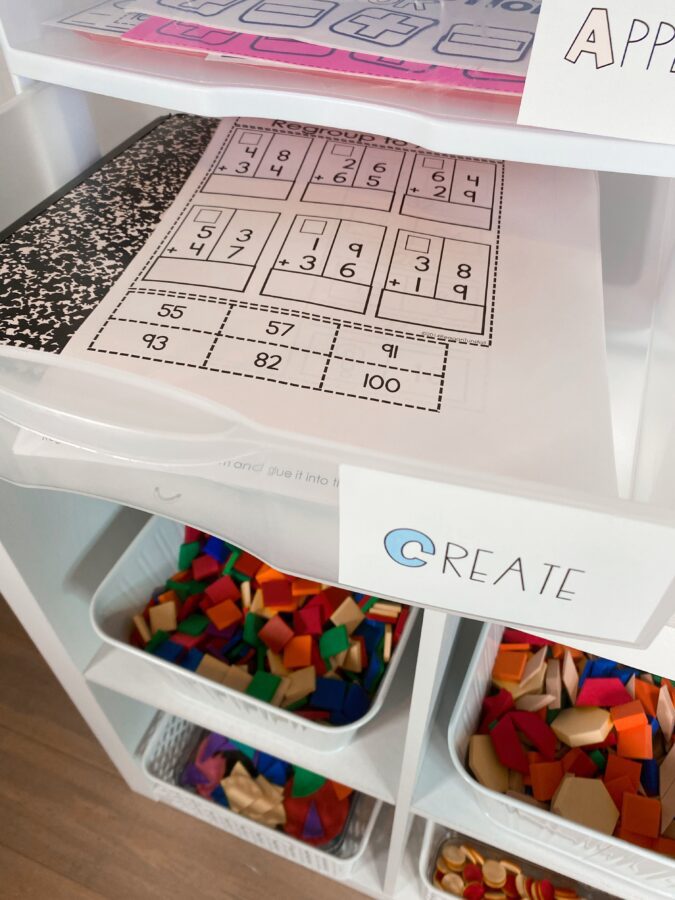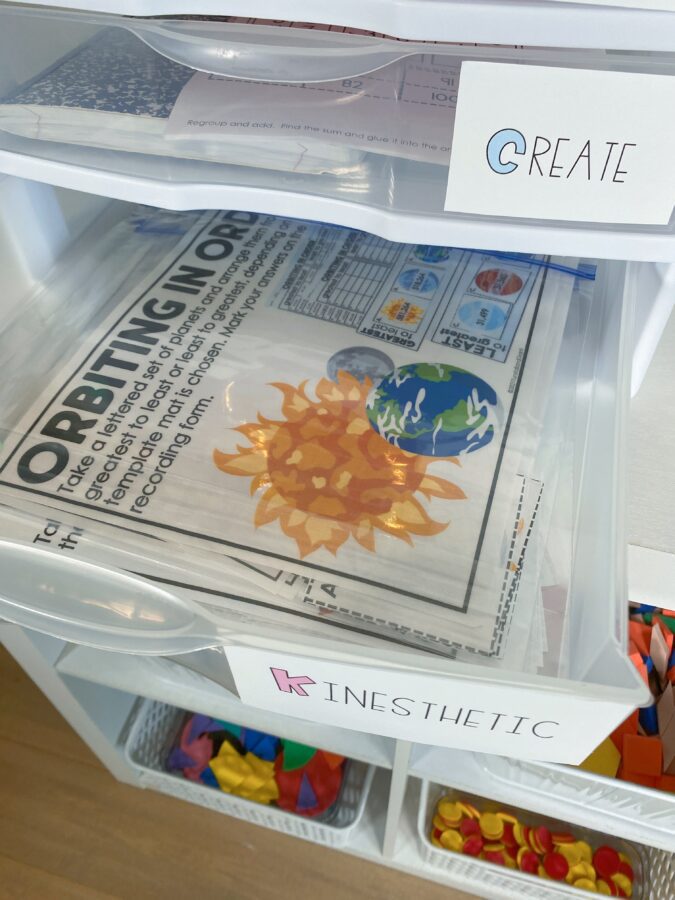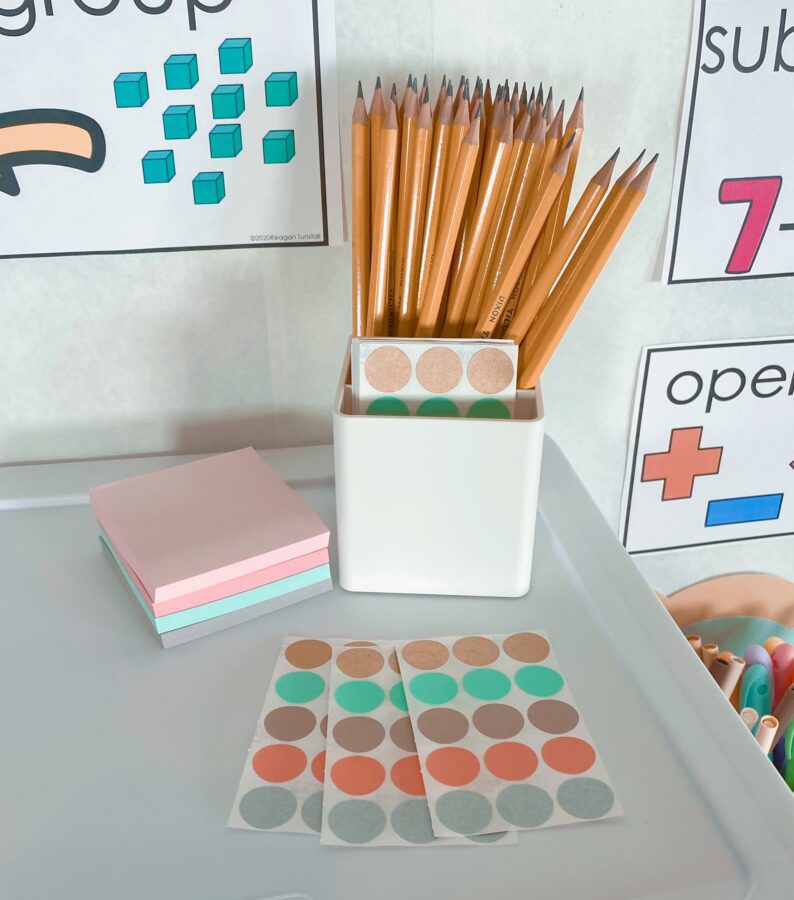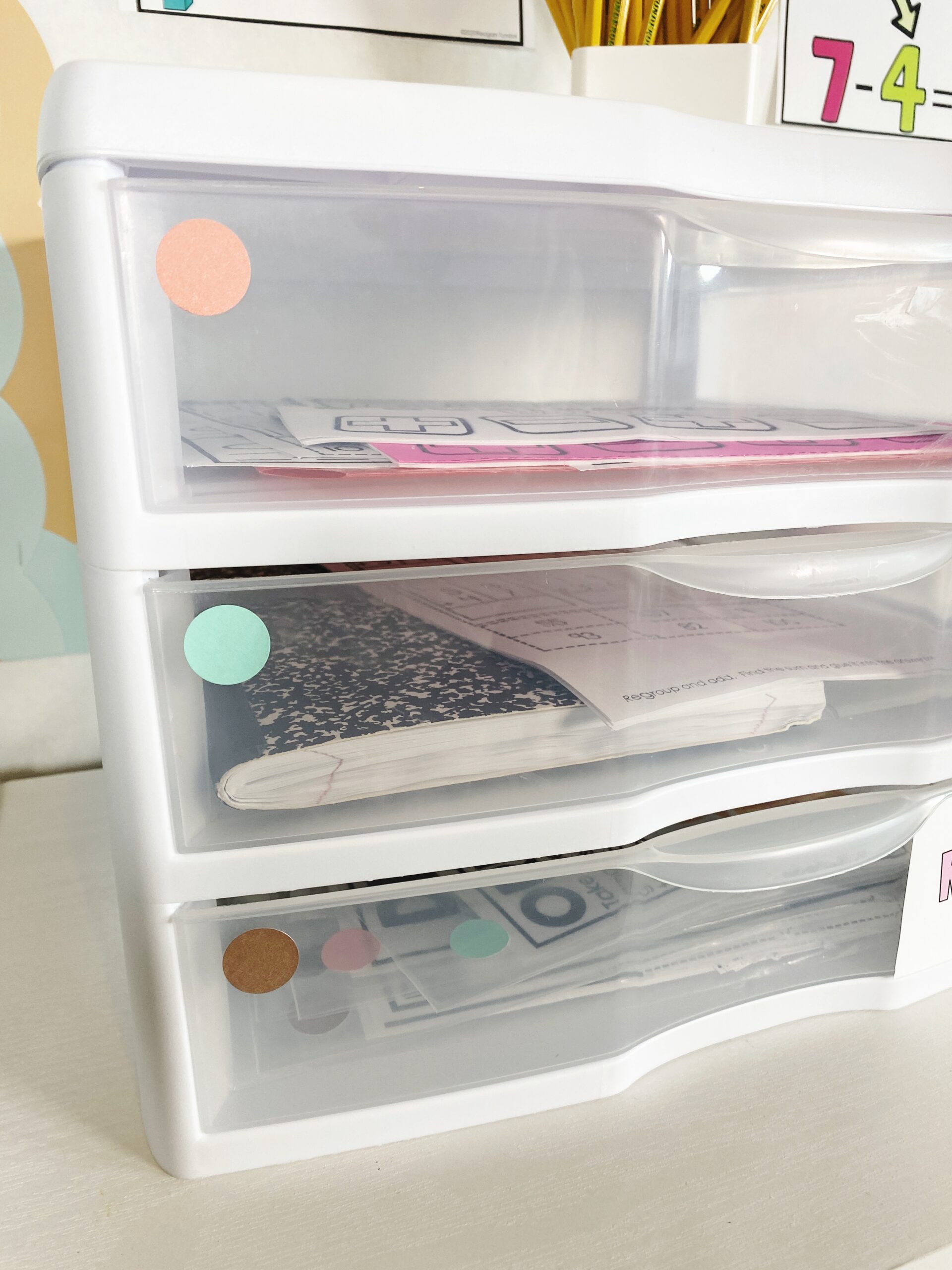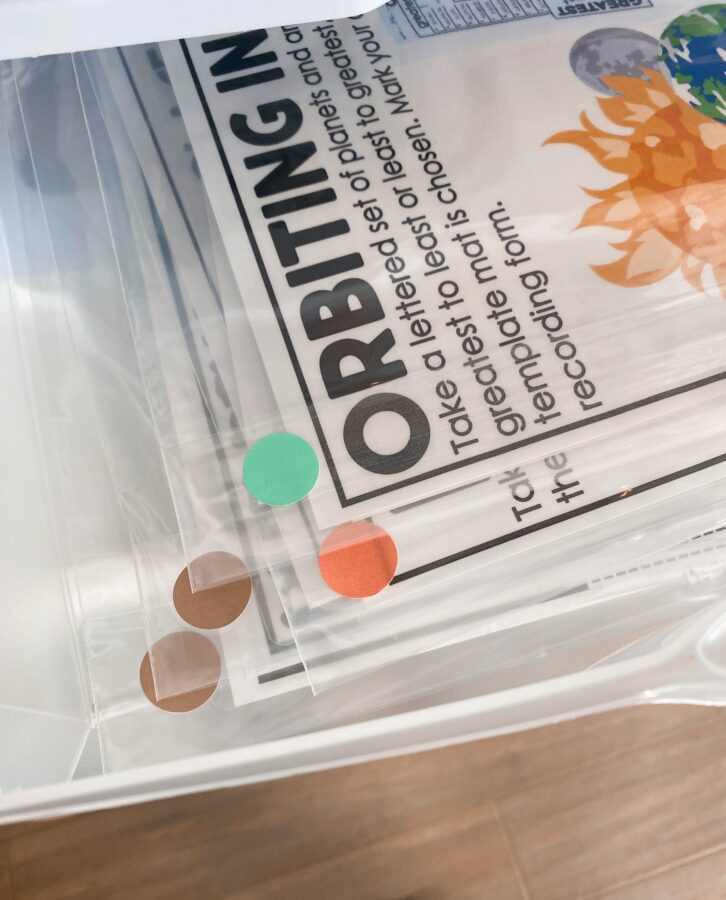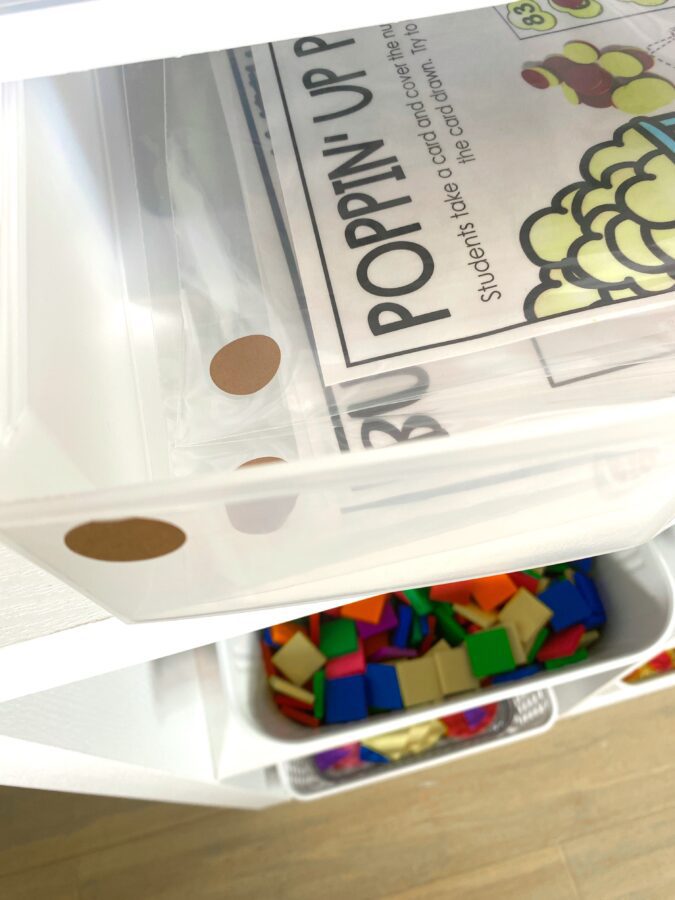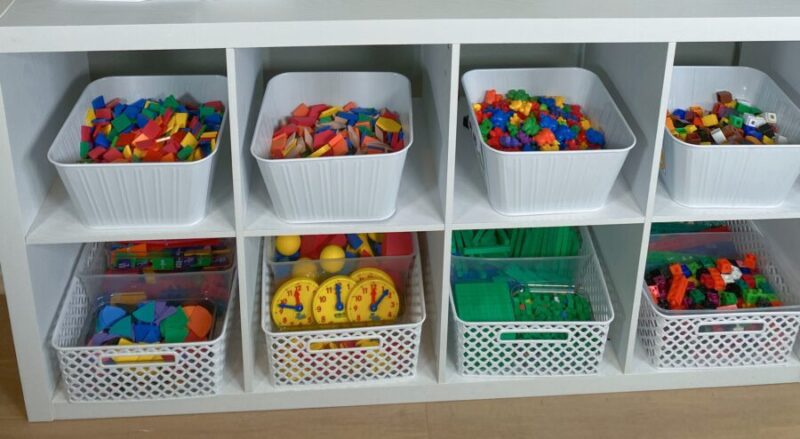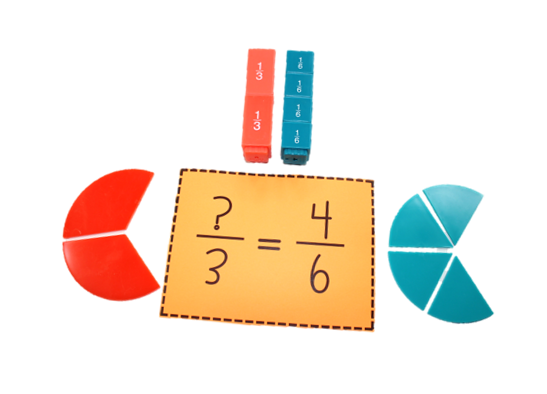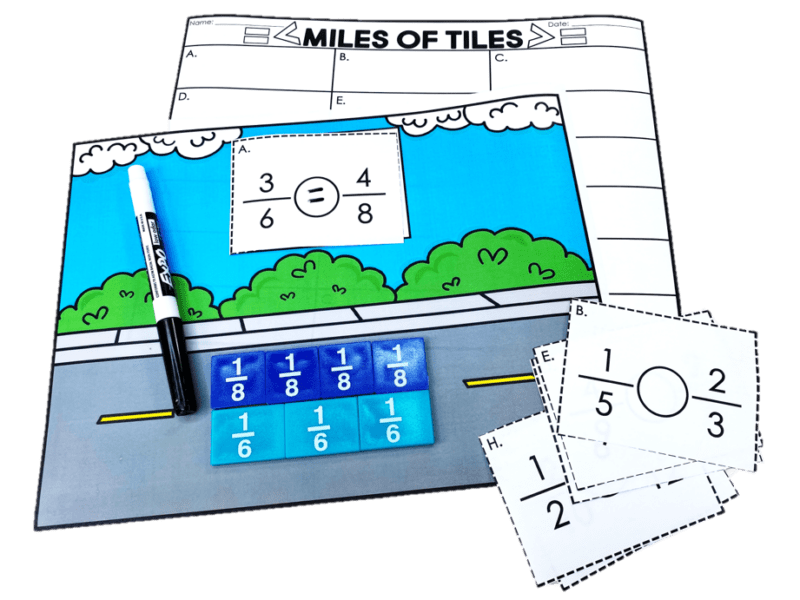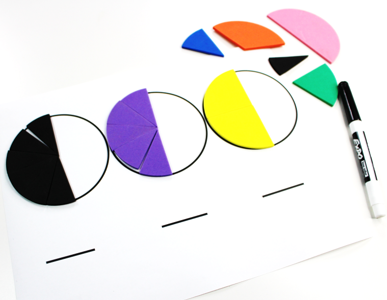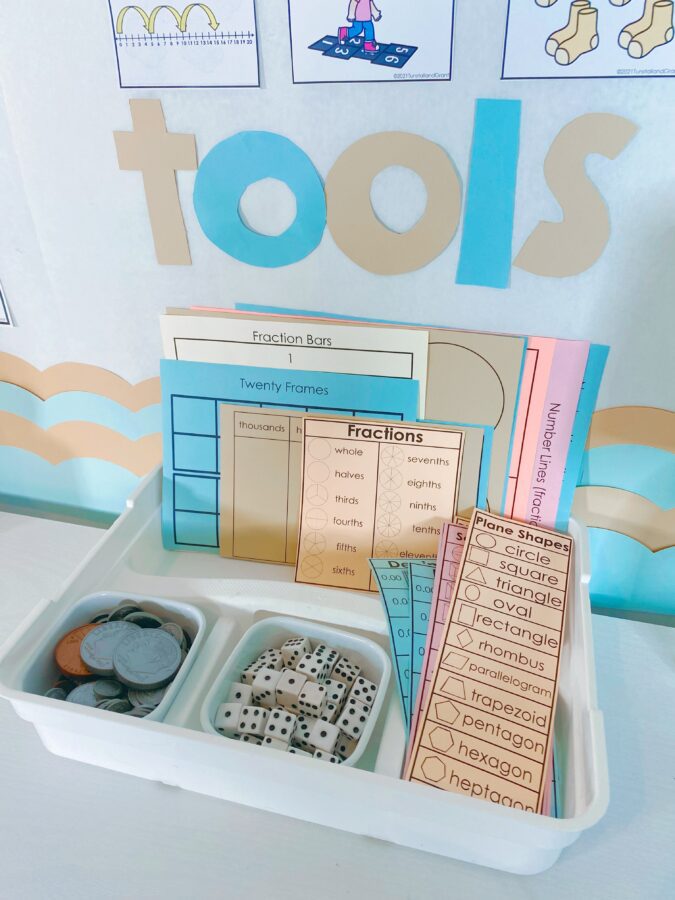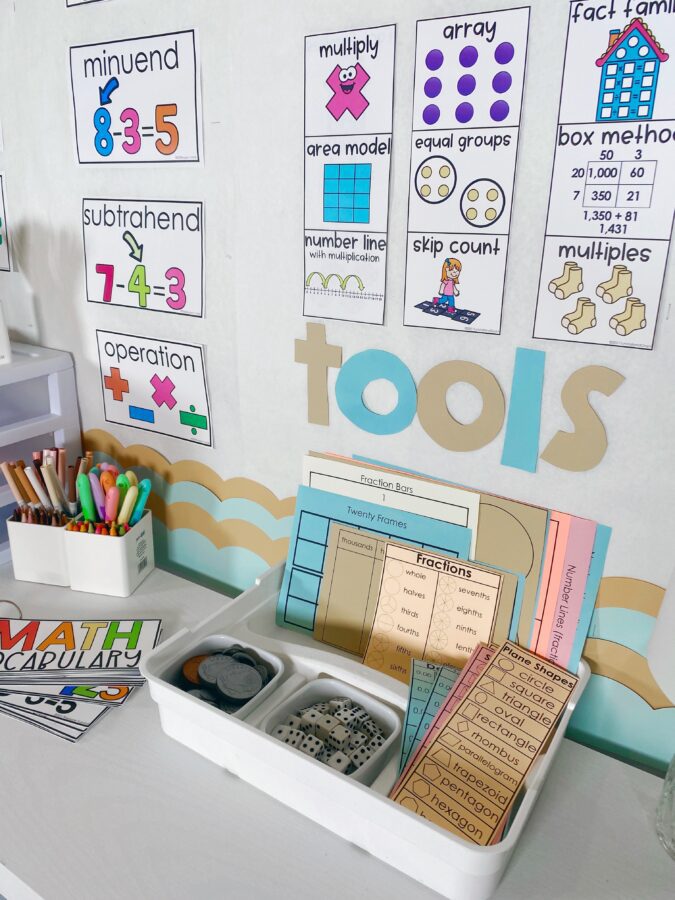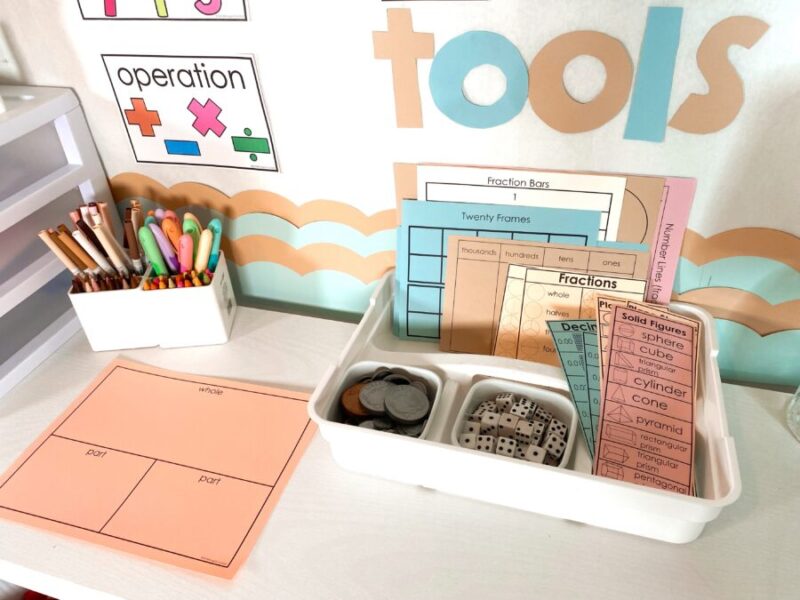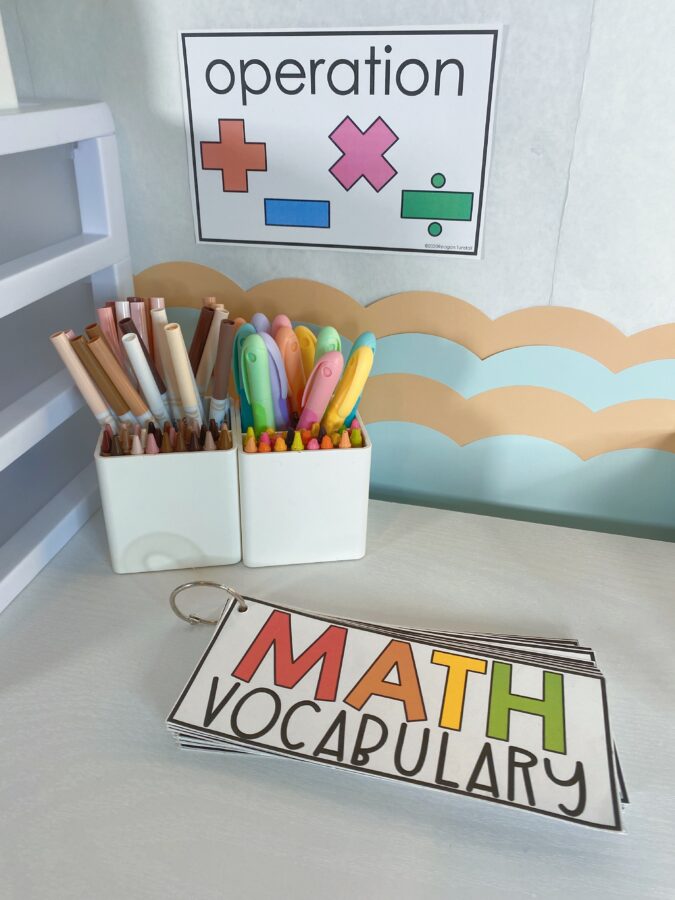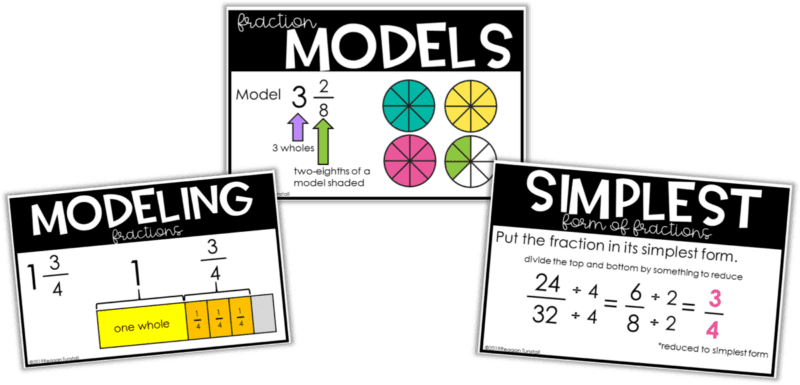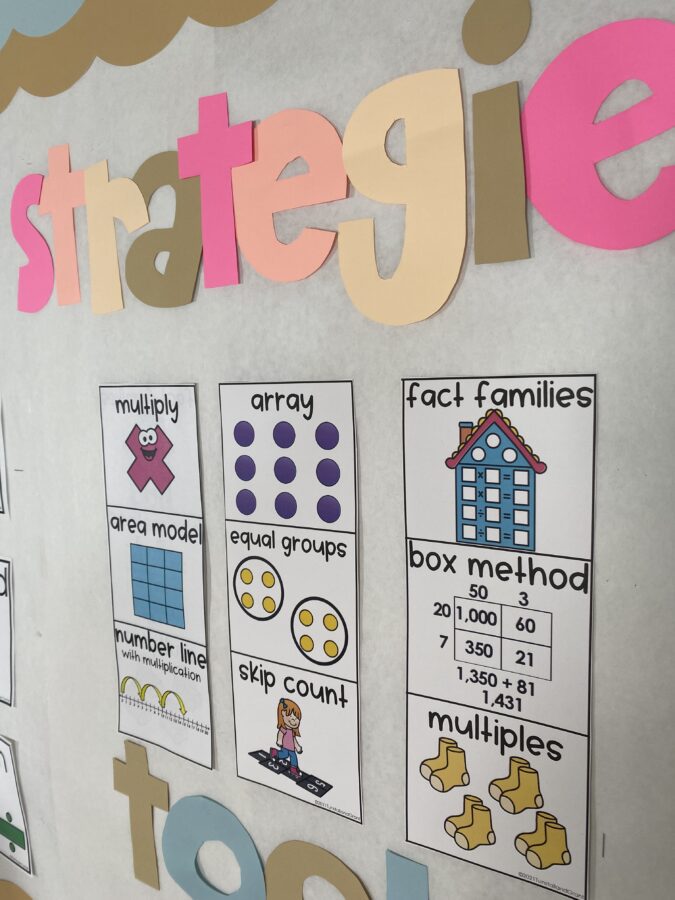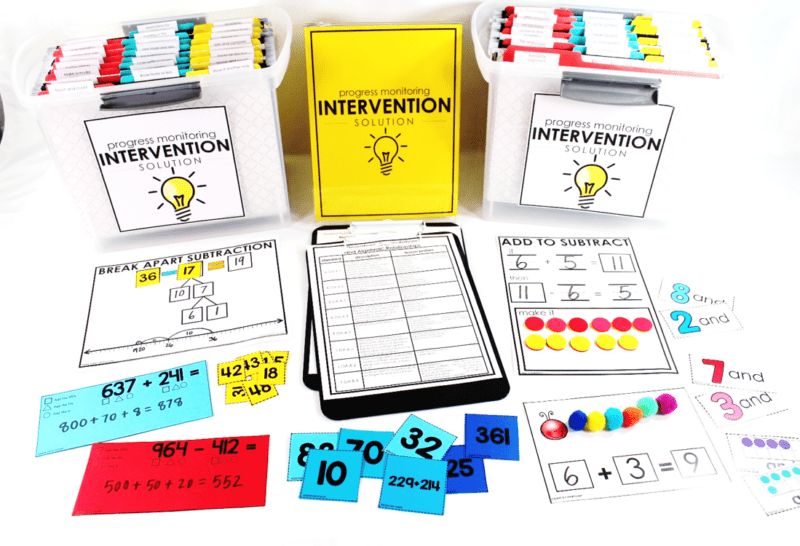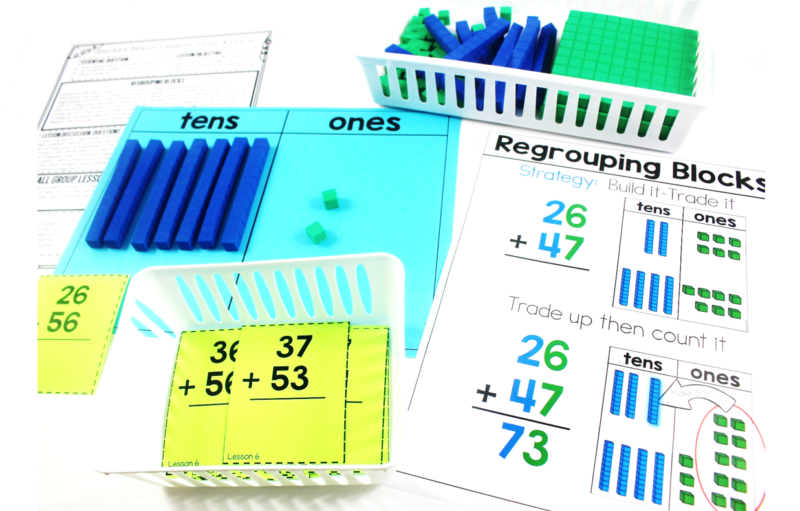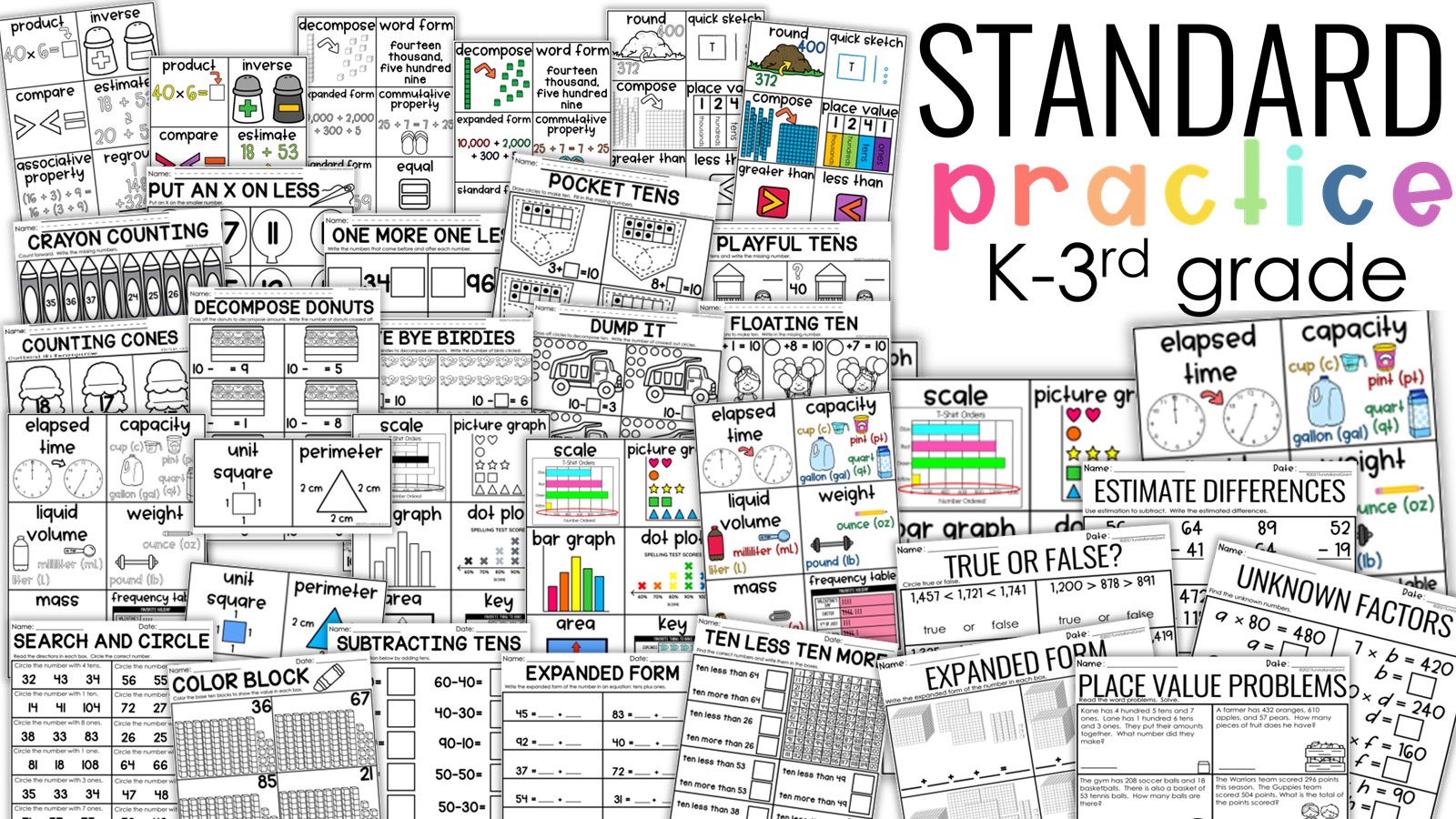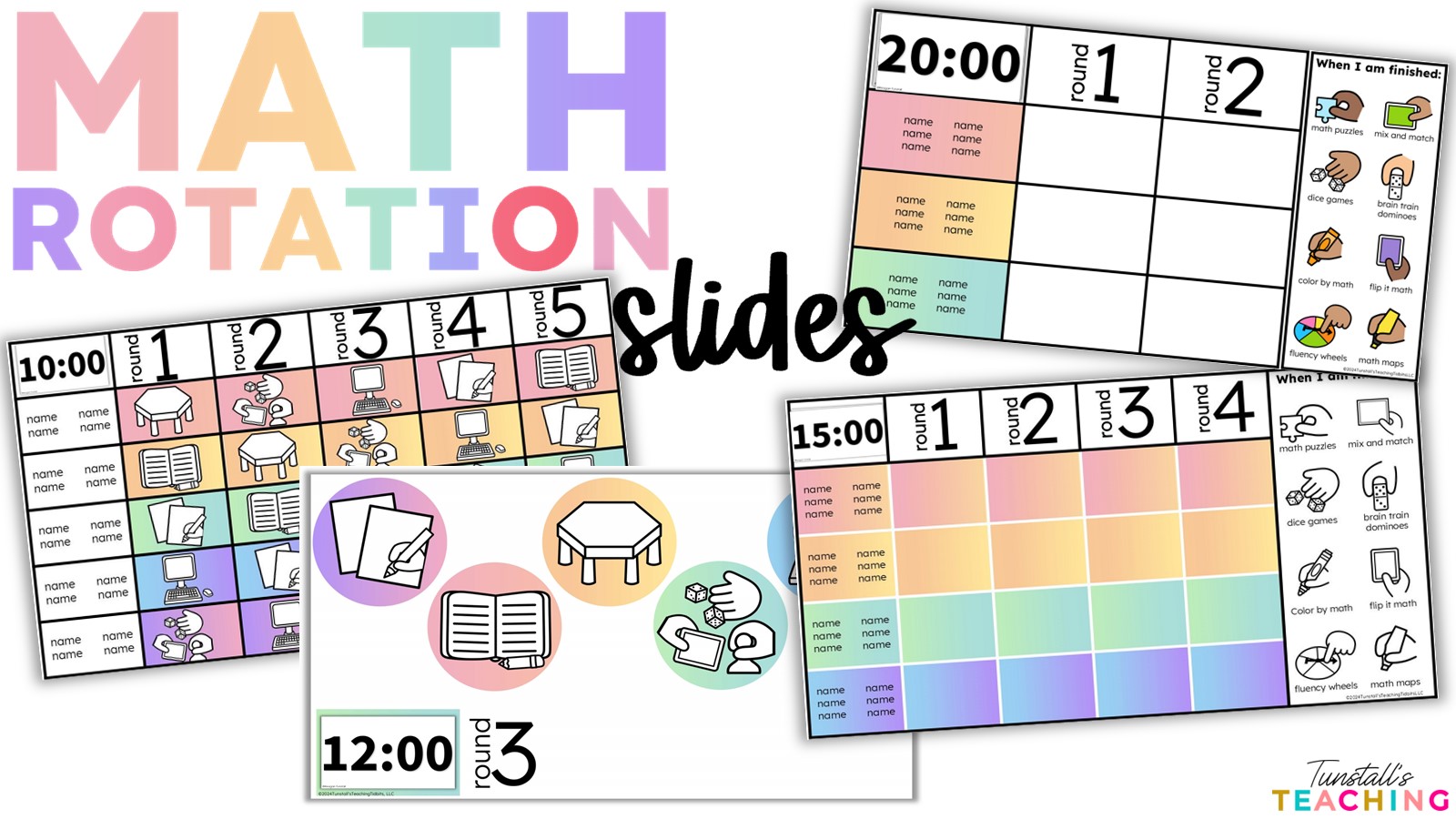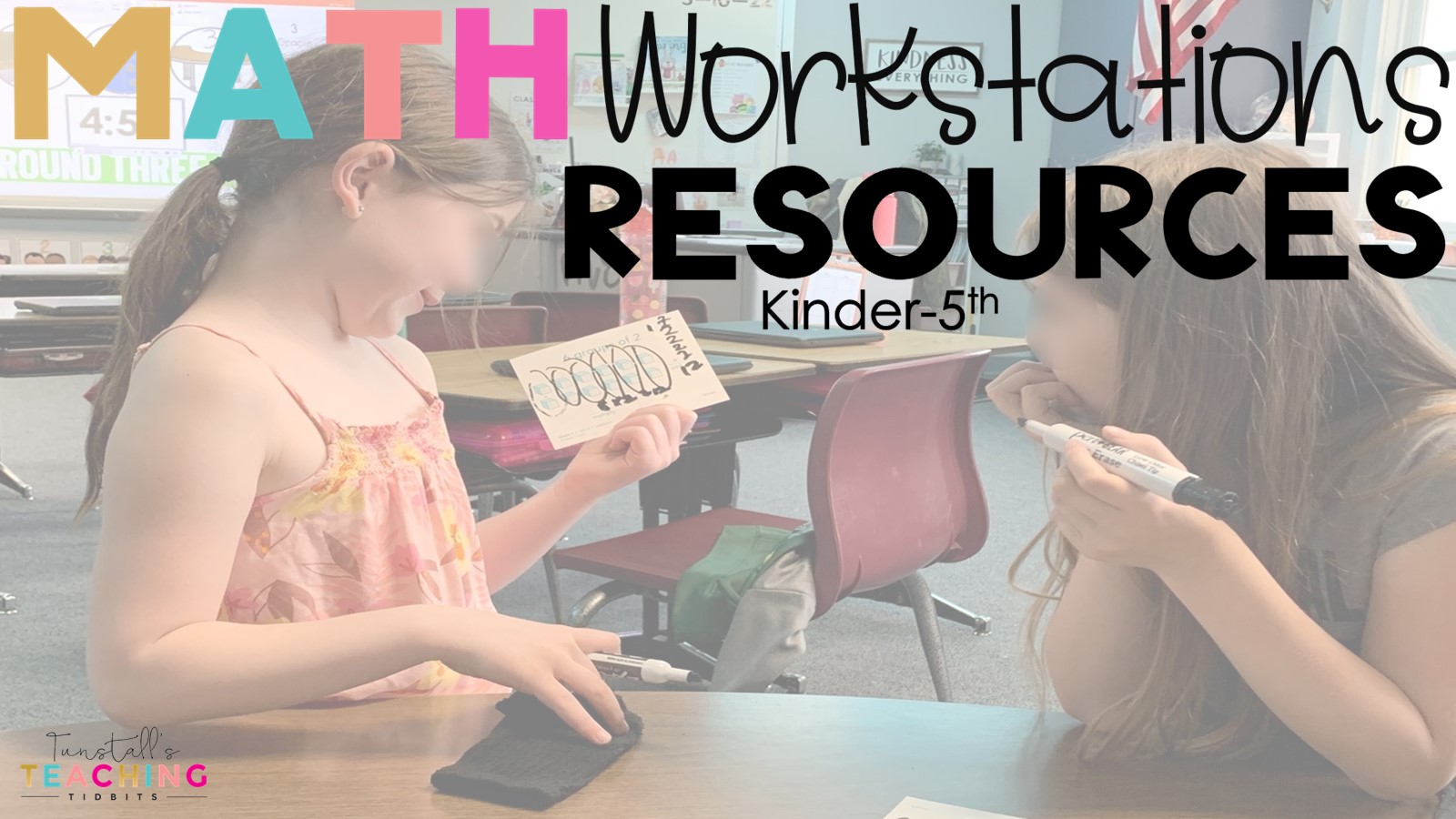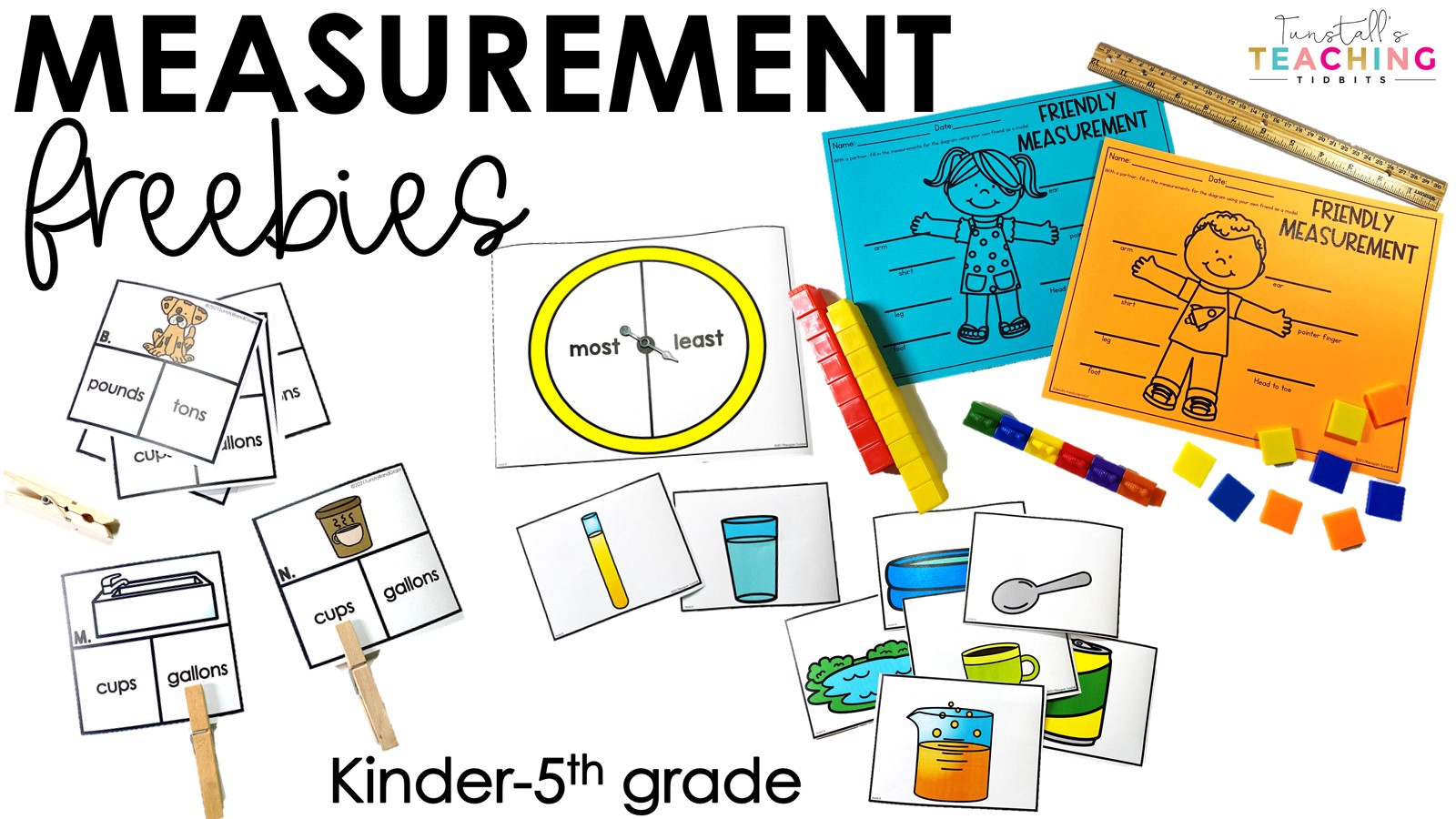Five Methods of Differentiation During Math Stations
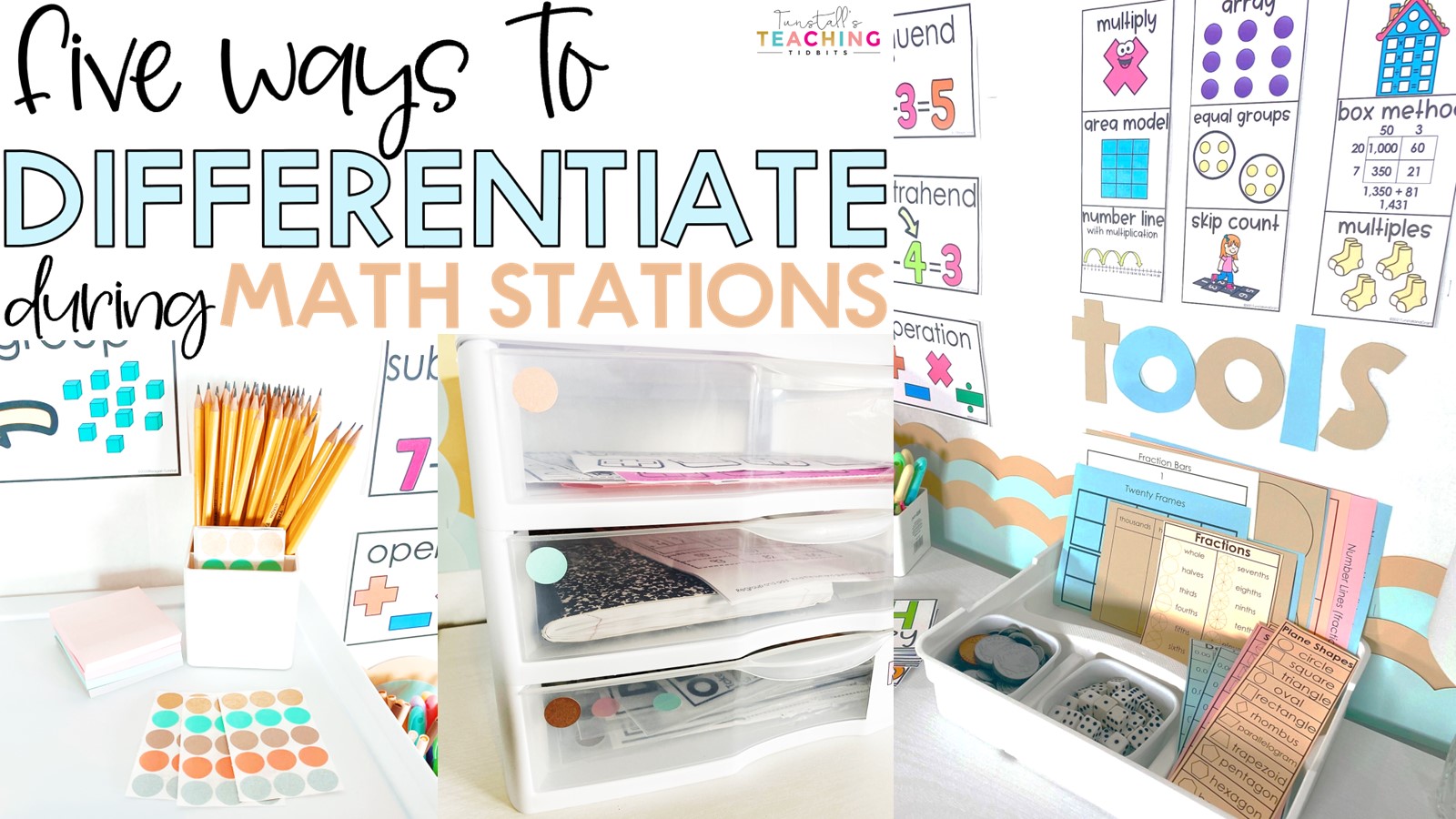
Differentiation is one of the leading concerns and needs for classrooms today. Teachers understand that teaching one math lesson directly to a roomful of students in one sitting does not meet all of the varied learning needs present. But what should it look like day to day that is sustainable for a busy teacher? What are the best ways to seamlessly integrate differentiation and meet the needs of students with diverse abilities? This post shares five ways to differentiate during math stations.
Differentiated Math Stations
We all experience the great dilemma during whole group instruction in math. We teach a lesson, and we are torn on whether to push forward, knowing some students need more instruction and practice on the content while also wanting to stall and reteach, knowing some students need to advance to more challenging content immediately. Guided Math mini-lessons and workstations allow for the best of both worlds. We can keep on track with our general math mini-lessons but provide much-needed differentiated instruction and student practice during small group workstations. Let’s break it all down!
Before diving into five ways to differentiate, it’s important to know our goals for differentiation. Let’s refresh our understanding of the tiers of intervention. I do this because educators tend to think of Response to Intervention (RTI) and Tier 3 learners when the word differentiation is mentioned. While we come by this thinking honestly, it’s been on our plates for over a decade, we will address all levels of students through these five ways to differentiate during math workstations. All students have strengths and gaps in learning. Targeting all students’ needs through the same techniques is rewarding, and the entire class benefits.
Five Methods of Differentiation During Math Stations
1. Grouping Students
When planning our guided math student groups or math workstation groups, we want to consider differentiation strategically. In our Guided Math PD, we discuss different ways to group students for math workstations highlighting the pros and cons of each. No matter how we may group students for their workstations, we want to create a homogenous group at the teacher-led small group table. Not only is it important to strategically group students for their time out at math stations away from the teacher, but we must also consider how we will meet with students in targeted instructional groups during math workstations.
While mixed ability grouping is a positive in cooperative learning situations, we don’t want to pair students from absolute opposite ends of ability level. Research shows students do best even in mixed groupings when their groups consist of developmental and ability levels that are not extremely distant from their own. While we hope our high achievers will scaffold and support our students still approaching learning targets, research shows that it happens more frequently when students have more academic common ground. This doesn’t mean I wouldn’t create mixed-ability groups containing tier three and tier one students. However, I would do so while also considering how their personalities will work together in a math activity. The goal is to group students who work well in academic situations and can function independently of direct instruction from a teacher or aide during a math center.
2. Types of Math Stations/Centers
Designing the student experience is one of my favorite teacher roles. What do I want students to do during their math station time? We already know we will spend time meeting with students in a teacher-led small group station, but what else will students experience during their math workstations? The research on math workstations is clear. Math workstations provide practice of previously learned skills and concepts. New skills are not present in workstations other than the teacher-led small group. Students should be able to recognize and understand the math skill being asked and apply that math skill. The purpose of this time is to provide refinement of skills through repeated practice in many formats.
Not only do we want to provide practice to students during math stations, but we also want to vary that practice to hit on different formats and modalities. This means students visit a variety of different age-appropriate workstations. Below, I share my math STACK system for workstations. While you don’t need five workstations, these can provide ideas for creating a well-rounded math experience for students. No matter where students fall in the RTI tiers, a well-rounded math experience will allow varied practice for all levels of learners.
The STACK stations are (teacher-led) Small Group, Technology, Application Station, Create or Communicate Math Understanding, and Kinesthetic Hands-on Math.
The descriptions for each station are ideas and would not all be happening at once. Here’s how simple you can have your setup. I sometimes use buckets, bins, or in this example, a simple three-drawer system. The teacher-led small group is happening with me, so I keep my Guided Math Small Group lessons (not pictured) at my teacher table. The technology round is Digital Guided Math eLessons so those are not pictured either. I just push those out to the students in Google or on SeeSaw. The only thing I have to have out for students are the three stations you see below: Apply, Create, and Kinesthetic.
Let’s take a look inside the drawers.
The apply station is independent practice. It follows the new learning closely but not today’s lesson because some students will visit this before seeing me in a small group lesson.
The create station is the math journal entry. Students work in their math journals for this round.
The kinesthetic drawer holds math center games. These are hands-on math activities.
At the end of this post, there will be grade-level links to math STACK stations if you are interested.
3. Color-Coding Station Choices
Having a variety of workstations is step one of differentiation, but providing more targeted activities within those workstations is where we reach our Tier 2 and Tier 3 students. A simple assignment of a color level to your groups will allow you to serve better their math learning needs out at stations. While I may have five groups, I only have three color levels of activities out at workstations. These three color assignments align with general above-level, on-level, and approaching-level labels. This means I may have more than one group pulling from the same color level out at their stations.
4. Manipulatives and Math Tools for mathematical thinking
Manipulatives and math tools are very helpful in leveling the playing field for all ability levels during workstations. Math manipulatives provide hands-on learning and skill understanding. Providing manipulatives can make a more difficult activity accessible to a less experienced learner.
Below, these three math third grade math center activities on fractions are made much more concrete using fraction pieces, blocks, and models. Using manipulatives allows students with limited fraction understanding to create models and understand the values of different fractions.
Determine the missing numerator
Compare fractions using the comparison symbols
Math workstation is from Stations by Standard
Create equivalent fractions
Likewise, math tools and mats can provide problem-solving help or information for reference when working mathematically. First introduced in the teacher-led small group, students learn the procedures and types of tools to reference while working mathematically. Then when out at workstations, students have their own community set of math tools they can grab when working.
Vocabulary and Strategy Cards from Intervention Solution and Standard Practice
This example shows the part-part-whole mat students can use at any grade level to solve for missing addends or subtrahends.
5. Strategies for Solving
Math is all about the process of solving. How do we take a problem and find a solution? What steps will we take to solve? Sometimes students are overwhelmed just by knowing what process to take to solve. This is where strategies swoop in to save the day. In day-to-day math instruction, strategies are introduced and taught explicitly. These strategies are then prominently displayed so students can easily refer to them for problem-solving. We ask students to name the strategy and steps for solving as part of our math warm-ups and small group instruction. Tier One students (everyone) will be taught the basic math strategies that we use most frequently for the skills and concepts of our grade level. But in the teacher-led small group, I can scaffold the math strategies to fit the needs of the students in front of me as students work through their problems.
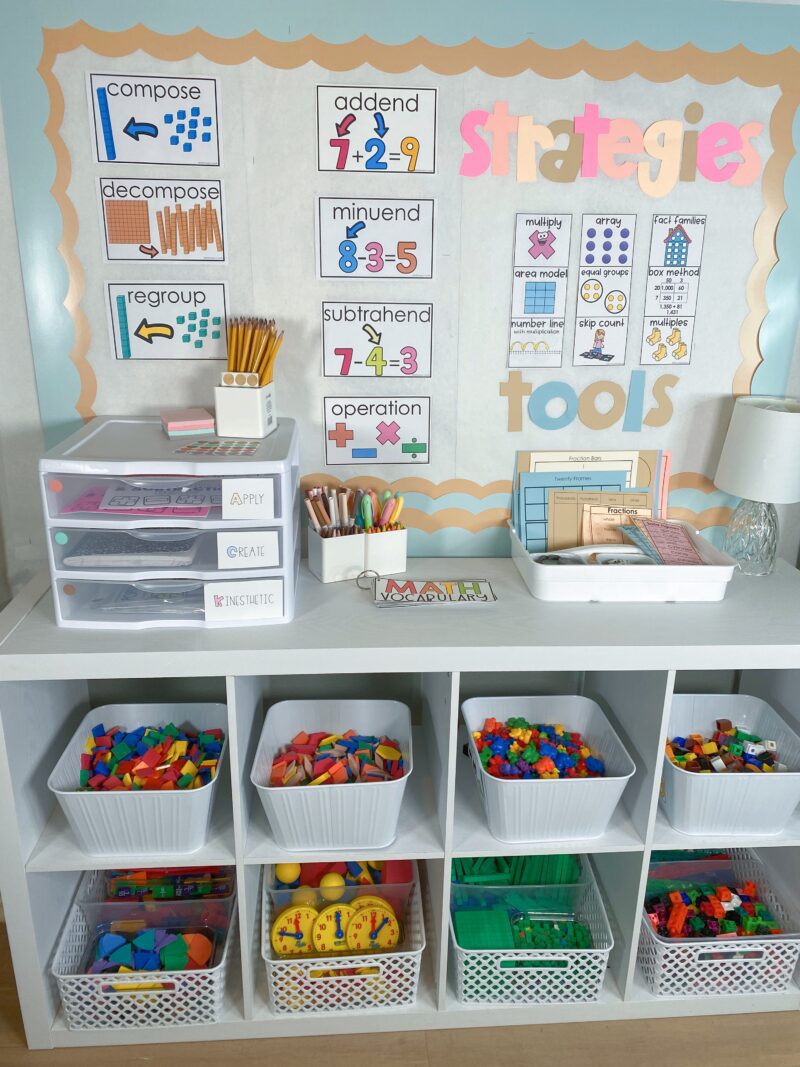
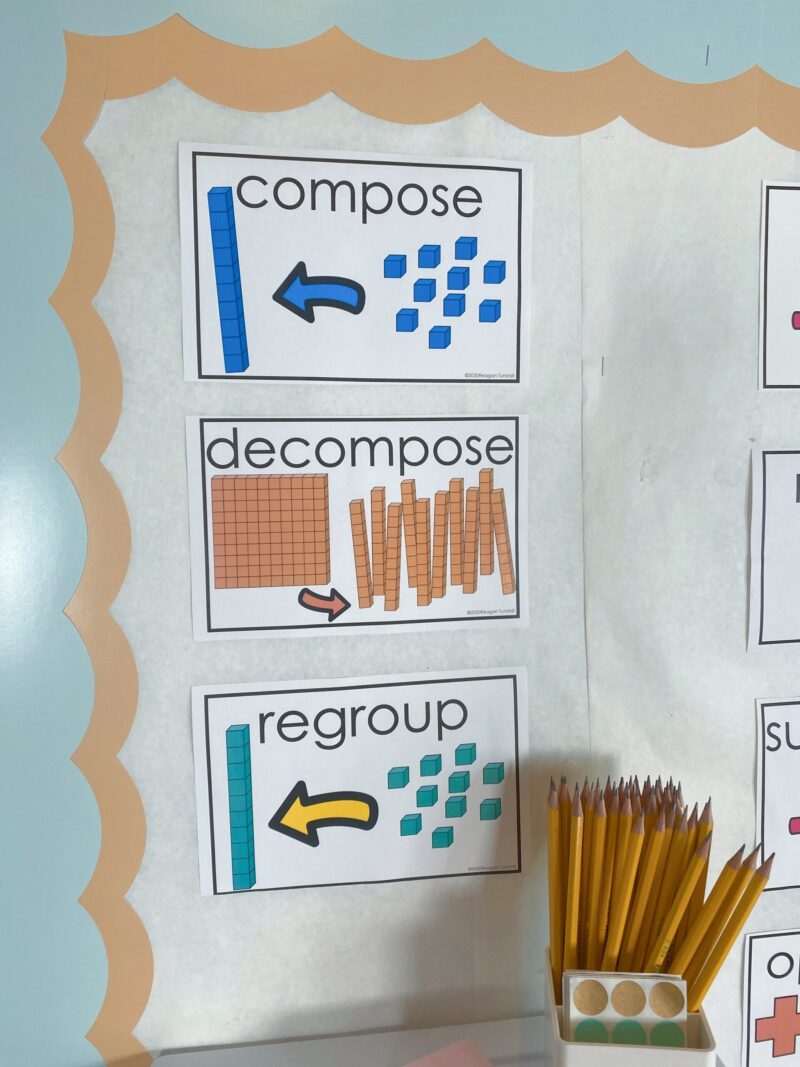
Math Word Wall Vocabulary by Grade Levels
Since we used fractions as our example earlier in this post, here are three examples of strategy cards pulled from our grades 3rd-5th math strategies visuals. Students get comfortable naming the strategy and then showing it as they work. This post shows more resources for math strategies instruction.
Below, these math strategies were pulled from the standard practice resource. Their small size makes them easy to use on a focus board.
Intervention Solution for Tier 3 Students
For most of our students, the above differentiation provides effective math instruction and practice to bring students to confident mastery. For those few students who struggle to respond to differentiation and targeted instruction within the regular guided math day, or they have all of their skills down and need enrichment, it is time for more intense targets and learning goals. Enter the intervention solution! This math intervention program allows teachers to effectively provide differentiated intervention, with progress monitoring built right in. Whether you have built-in time for intervention or you want to allow students extra time and practice, this resource provides differentiated tools to support both teachers and students. You find the lesson probes aligned to the standards. Likewise, you’ll have the tracking and progress monitoring tools built right in for you.
MATH WORKSTATIONS BY GRADE LEVEL
If you are ready to provide a differentiated experience for students in grades K-5, we are here to help! Our resources are vertically aligned and standards-based, which makes differentiating easy. We can provide a lower- or higher-level skill with ease of mind. To search all math activities by grade level, simply click your grade below.

 Contact Us
Contact Us